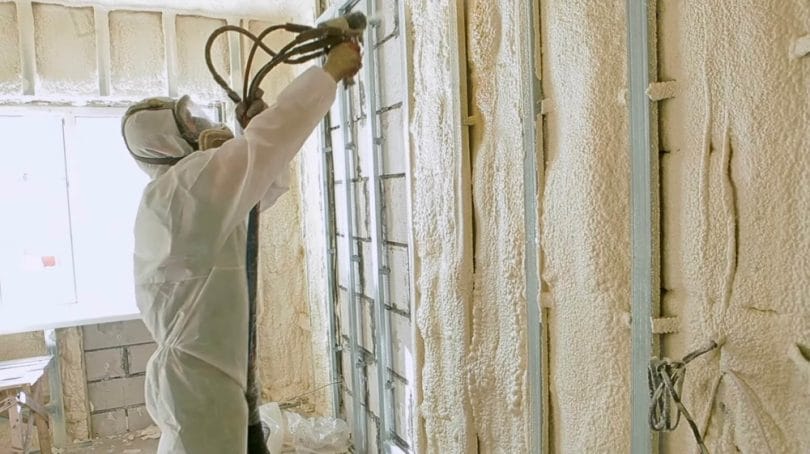Introduction
If you reside in a bustling city or a noisy area, ensuring your home is soundproofed becomes a priority. With numerous soundproofing options available, the challenge lies in selecting the most effective product. The key to successful soundproofing lies in the insulation material, often mistaken for sound absorption. In this guide, we unravel the best soundproofing insulation options and delve into their features.
Soundproofing Insulation Materials
1. Mineral Wool:
– Composed of molten igneous rock and slag, mineral wool is a dense and porous material effective in slowing heat and cold transfer. It can absorb both airborne and footfall noise and vibrations, offering versatile soundproofing solutions.
2. Fiberglass:
– Created by spinning molten plastic into wool and reinforcing it with tiny fiberglass fibers, fiberglass is a porous material that traps air, aiding in temperature control. It absorbs airborne sound similar to mineral wool, providing effective soundproofing.
3. Blown-In Cellulose:
– Comprising recycled paper fiber and flame-retardant material, blown-in cellulose insulation is easy to add to existing structures. Its loose fibers enhance sound absorption, making it a cost-effective option for post-construction soundproofing.
4. Spray Foam Insulation:
– Polyurethane foam spray acts as a thermal barrier and can limit air movement. While primarily used for thermal insulation, soundproof spray foam can contribute to soundproofing post-construction walls.
5. Foamboards:
– Extruded polystyrene foam boards, available in blue or pink, offer insulation and sound reduction. These boards, when used correctly, help in minimizing sound transmission and enhancing overall soundproofing.
Understanding Different Insulation Types
Mineral Wool:
Mineral wool, derived from molten rock and slag, is non-combustible and water-resistant. Its dense and porous nature makes it effective in absorbing both airborne and structural noise.
Fiberglass:
Created by spinning molten plastic into wool, fiberglass provides insulation by trapping air. Its porous structure makes it adept at absorbing airborne sound, contributing to efficient soundproofing.
Blown-In Cellulose:
Comprising recycled paper fiber and flame-retardant material, blown-in cellulose insulation offers cost-effective soundproofing solutions. Its loose fibers enhance sound absorption, making it suitable for post-construction applications.
Spray Foam Insulation:
Primarily a thermal insulator, spray foam insulation can limit air movement, contributing to soundproofing in addition to thermal control. It is particularly useful for post-construction soundproofing efforts.
Foamboards:
Extruded polystyrene foam boards, available in blue or pink, offer insulation and sound reduction. When correctly utilized, these boards can effectively minimize sound transmission, enhancing overall soundproofing.
Considerations When Selecting Insulation
STC (Sound Transmission Class):
STC measures how much noise is reduced by different materials, including windows, doors, floors, walls, and ceilings. A higher STC rating indicates better sound-blocking capabilities, crucial for effective soundproofing.
Coefficient of Noise Reduction (NRC):
NRC measures a material’s ability to absorb noise while minimizing reflection and amplification. Higher NRC values indicate better sound absorption, essential for addressing echoes in a soundproofed space.
Insulation R-Value:
R-value signifies a material’s resistance to heat and sound wave transfer. Higher R-values indicate better resistance to heat and sound transfer through walls, floors, and ceilings.
Recommended STC Ratings:
– STC40 is suitable for a quiet house.
– IBC recommends a minimum STC50 rating for walls, ceilings, and floors.
– STC52 is recommended for bedrooms.
– STC56 is suitable for residential areas like bathrooms, living rooms, and kitchens.
– STC33 is a common rating for 2×4 walls with 12″ drywall on both sides and no insulation.
Does Insulation Provide Soundproofing?
Yes, insulation is a key component of soundproofing. Fiberglass and loose cellulose insulation, in particular, are popular choices for their sound absorption properties. These materials not only keep the home thermally efficient, reducing energy costs, but also contribute significantly to soundproofing.
Final Thoughts
Selecting the right soundproofing solution is essential, whether you’re dealing with noisy neighbors or seeking to contain sound within a room. Conducting thorough research can help narrow down options and find the most suitable soundproofing insulation. We trust the information provided above proves valuable in your quest for an acoustically enhanced living space.
Disclosure: We may get commissions for purchases made through links in this post.








